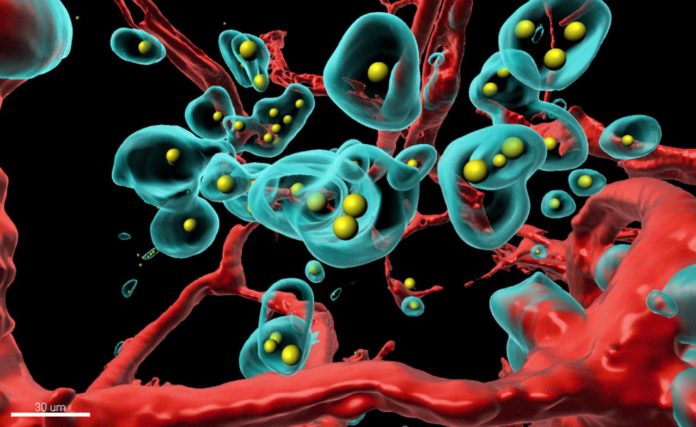Scientists at the University of Zurich found that inoculating an infected virus produces more antibodies in the tumor than when the drug was injected directly.
Technology called Shread that has been successfully tested in mice with breast cancer.
“The innovation could reduce the side effects of cancer therapy and may hold the solution to better delivery of Covid-related therapies directly to the lungs,” says the university.
- Scientists in Fear of This New Predator From Red Sea Eating Native Species in Mediterranean
- Does This Mean We Stopped Being Animal and Started Being Human Due to ‘Copy Paste’ Errors?
- The One Lifestyle Choice That Could Reduce Your Heart Disease Risk By More Than 22%
- Aging: This Is What Happens Inside Your Body Right After Exercise
- Immune-Boosting Drink that Mimics Fasting to Reduce Fat – Scientists ‘Were Surprised’ By New Findings
The scientists explain that “unlike chemotherapy or radiotherapy, this approach does no harm to normal healthy cells.”
They add that “Once inside tumor cells, the delivered genes serve as a blueprint for therapeutic antibodies, cytokines and other signaling substances, which are produced by the cancer cells themselves and act to eliminate tumors from the inside out.”
“We trick the tumor into eliminating itself through the production of anti-cancer agents by its own cells,” says postdoctoral fellow Sheena Smith, who led the development.
Using the Shread system, the scientists made the tumor itself produce an antibody against breast cancer in a mouse.
They found that after a few days, Shread produced more antibodies in the tumor than when the drug was injected directly.
Furthermore, the concentration in the bloodstream and in other tissues where side effects could occur was significantly lower.
The scientists used a highly sophisticated high-resolution 3D imaging method and fully transparent tissues to show how the therapeutic antibody, produced in the body, creates pores in tumor blood vessels and destroys tumor cells.
Scientists concluded that:
By delivering the SHREAD treatment to patients via an inhaled aerosol, our approach could allow targeted production of Covid antibody therapies in lung cells, where they are needed most.
This would reduce costs, increase accessibility of Covid therapies and also improve vaccine delivery with the inhalation approach.
Image Credit: Plückthun Lab
